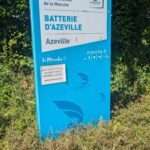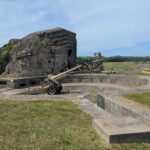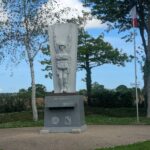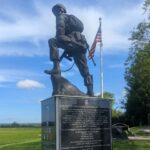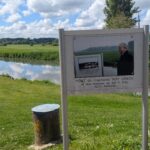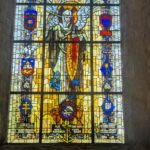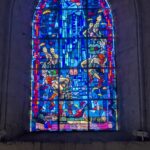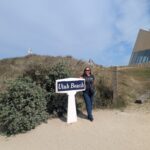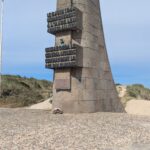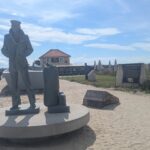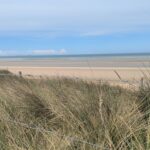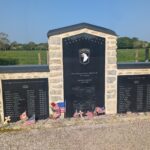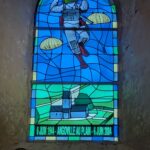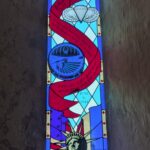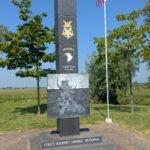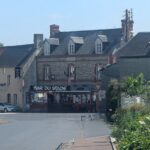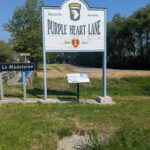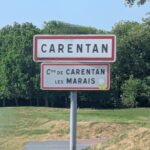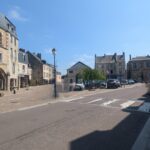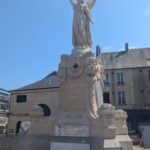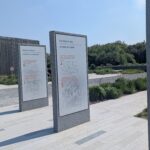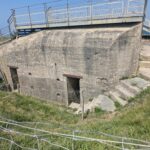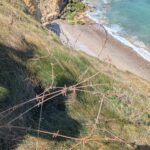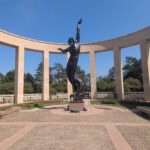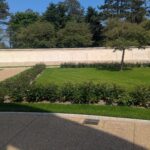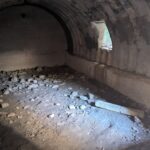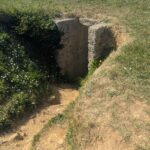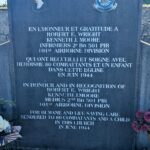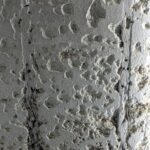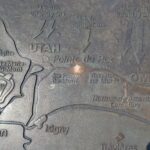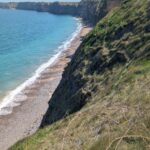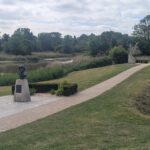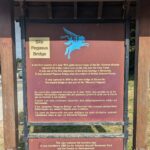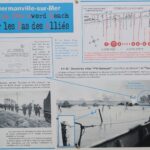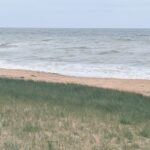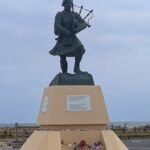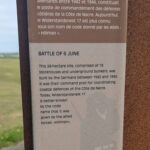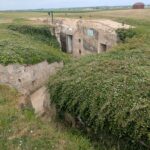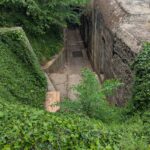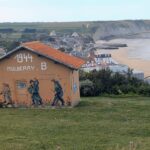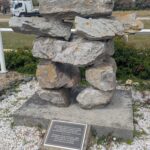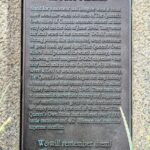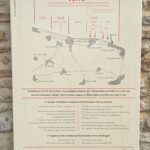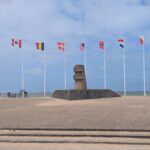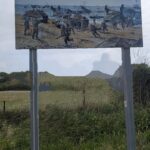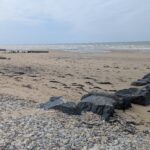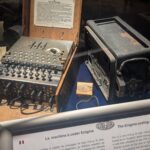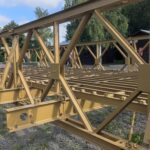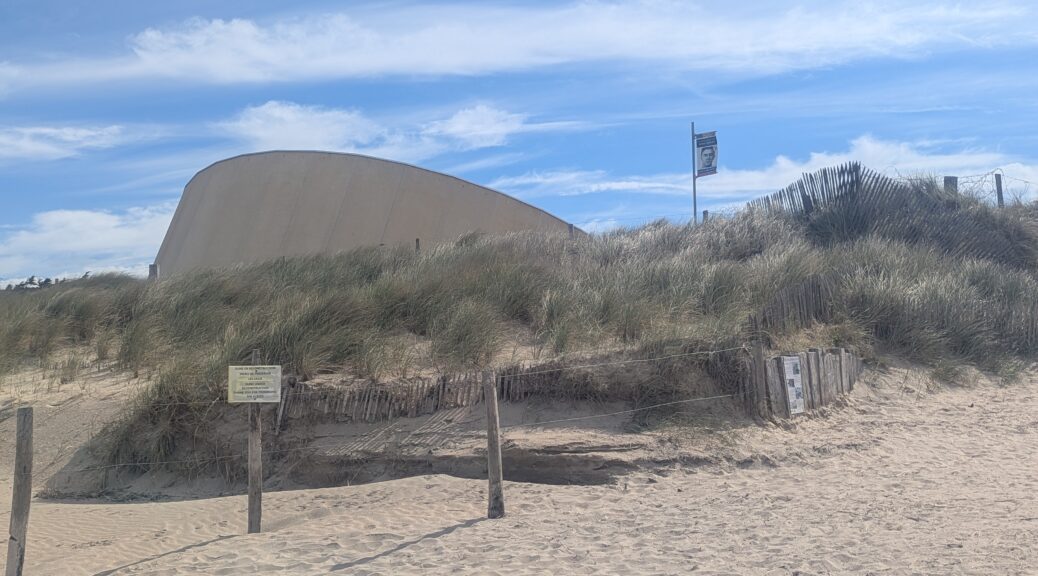
Operation Overlord: The D-Day Beaches and the Battle of Normandy
I went to New Orleans a few years ago specifically to visit the National WWII Museum and I planned my trip to Normandy to visit the D-Day beaches.
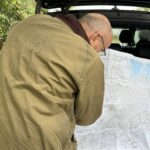 I could have wandered on my own but wanted a guide, both for more information and to visit additional WWII sites beyond the beaches. I found this site for a private tour: D-Day Tours of Normandy. I booked the 3-day US based tour.
I could have wandered on my own but wanted a guide, both for more information and to visit additional WWII sites beyond the beaches. I found this site for a private tour: D-Day Tours of Normandy. I booked the 3-day US based tour.
I highly recommend this company; it’s run by Malcolm Clough, a retired British policeman who went back to university to get his history degree.
Malcolm provides a great booklet to his guests with more information on all the sites we visited and great maps. I’ve really enjoyed reviewing this and looking up some of the stories and battles online for more details, such as the medics in Angoville au Plein.
“Soldiers, Sailors, and Airmen of the Allied Expeditionary Force!
You are about to embark upon the Great Crusade, toward which we have striven these many months. The eyes of the world are upon you. The hope and prayers of liberty-loving people everywhere march with you. In company with our brave Allies and brothers-in-arms on other Fronts, you will bring about the destruction of the German war machine, the elimination of Nazi tyranny over the oppressed peoples of Europe, and security for ourselves in a free world.
Good luck! And let us beseech the blessing of Almighty God upon this great and noble undertaking.”
– General Eisenhower
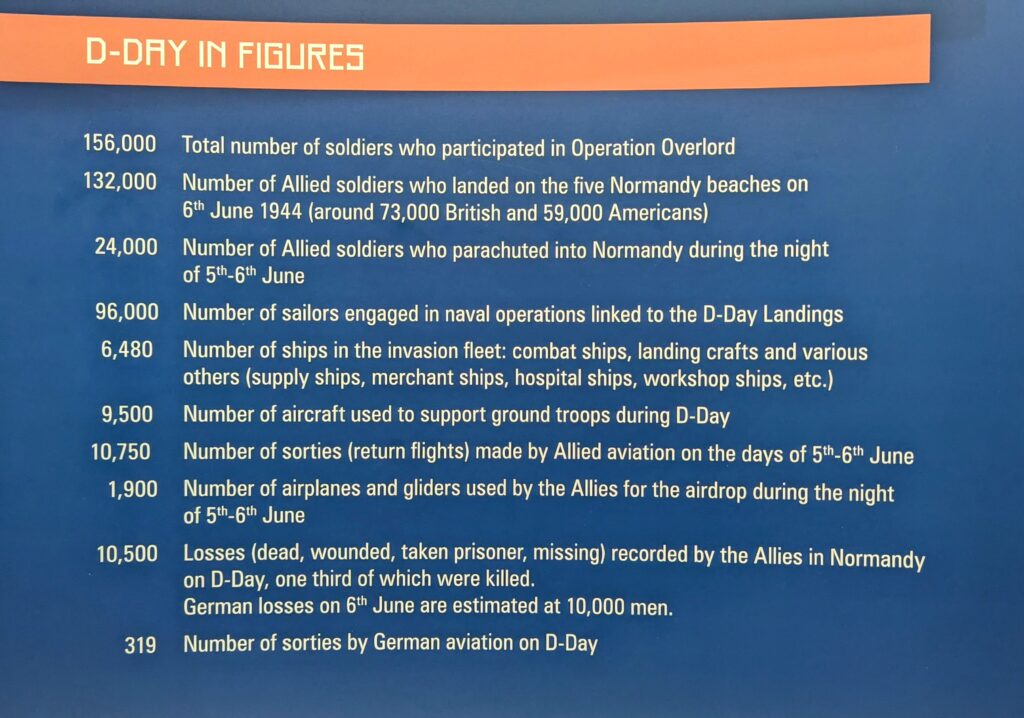
Day 1
- St. Mere Eglise Paratrooper Drop Zones – Malcolm had detailed maps showing landing locations of the paratroopers. Very interesting to see how spread out they were and how hard it was for them to accomplish their tasks because the bad weather and anti-aircraft fire kept them from their correct landing zones. “We’re not lost, we’re in Normandy.” Lt. Winters. Band of Brothers
- La Fière, Cauquigny Causeway, and Chef du Pont – The Allies needed to hold the bridges across the River Merderet to protect access to Sainte Mere Eglise. The area where we stopped has a memorial to the 101st Airborne, Espace Mémoriel de la Fière, in a nice green space despite being next to a large factory.
- Amfreville, ‘Timmes Orchard’ and Hill 30 – The Paratroopers of the 507th & 508th PIR prevented the Germans from mounting an effective attack towards Chef du Pont and La Fière bridges.
-

Father Ignatius Maternowski Sainte Mere Eglise and the fighting in the village – We visited the church of Notre Dame de la Paix on the square. One of the stained glass windows has the Virgin Mary plus Paratroopers and Army symbols. There is also a window honoring Father Ignatius Maternowski. Several paratroopers from the 82nd landed in town which was occupied by the Germans. One paratrooper, John Steele, was hung up on the roof when his parachute was caught. Although he played dead initially, he was hauled in though windows on the bell tower by German soldiers and taken prisoner. He escaped a few hours later and joined his unit as they attacked the town. A parachute is displayed on the church (but on the wrong corner, according to Malcolm). It was originally for a reenactment but they kept it up for as a memorial and replace the parachute every year. Another paratrooper landed on the roof but slid off down to the ground and escaped. I would have liked to return to see the Airborne Museum in town.
- Azeville and St. Marcouf Batteries – The Crisbecq Battery, sometimes called Marcouf Battery because it’s in the town of Saint-Marcouf, was part of the Atlantic Wall, the German coastal fortifications. The battery was captured on 9 June 1944 by the U.S. 22nd Infantry Regiment that landed on Utah Beach. The airfield at Azeville was used by the Army Air Force for resupplying.
- Utah Beach – The westernmost landing beach, the objective was to isolate the Cotentin peninsula and open the road to Cherbourg.
- We also visited the field in Beuzeville-au-Plain where the plane with Lt. Meehan of Easy Company, 506 PIR went down; see Band of Brothers, Day of Days. A memorial was put up after Band of Brothers increased local tourism.

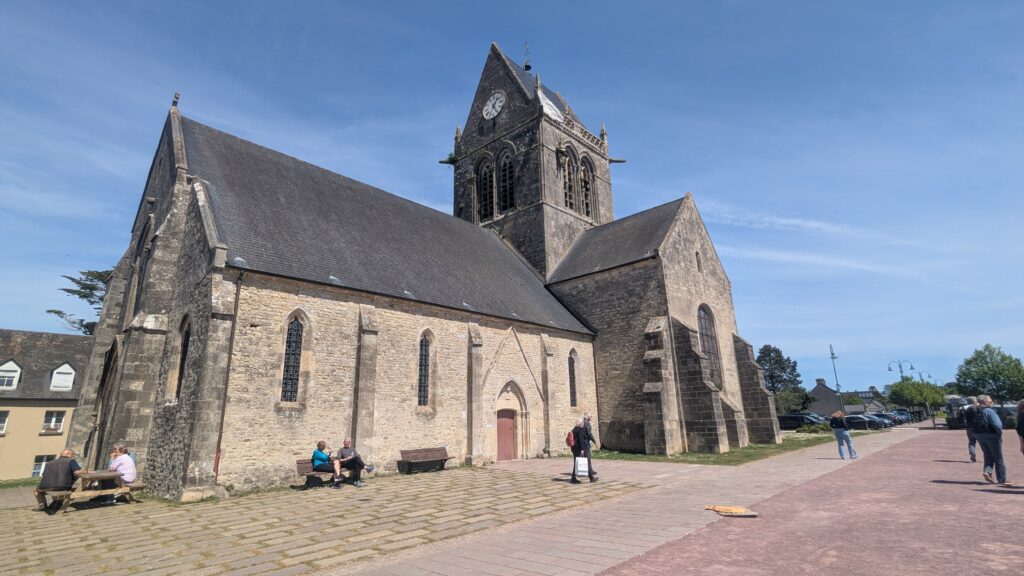
Day 2
- Angoville au Plein – The church was used as field hospital. When the Americans pulled out to regroup, two Medics, Robert Wright and Kenneth Moore, stayed behind to care for 65 wounded soldiers. The Germans moved in town and Wright stood outside asking the German commander to let them stay, they had no weapons. The German verified there were no weapons in the church, then asked the two Medics if they would help the German wounded, too. Wright and Moore treated 15 German soldiers and a wounded French child while the Americans moved back in and fighting raged around the church. The pews, used to hold the soldiers, are stained with their blood. They both received the Silver Star and there is a memorial outside the church. The stained glass windows in the church honor the medics and the parachute regiments.

Major Winters Memorial - Brecourt Manor, 101st Airborne Memorial, Major Winters Memorial – We visited the 101st airborne Memorial then the trenches at Brecourt Manor (Band of Brothers, Day of Days, taking out the 4 German guns). Just a bunch of trees now, but I was here and heard exactly where Easy Company was and saw the trench line. The Major Winters Memorial was dedicated 2012, a year after he died. We had to wait to get into small lot since there were 6 vans of Dutch soldiers there getting photos, too.
- The Capture of Carentan – We visited Dead Man’s Corner outside Carentan where a US tank was taken out by a German bazooka and blocked the road for a week. Carentan was critical to link Utah and Omaha beaches. Malcolm told me about LTC Cole’s (502 PIR) bayonet charge to get across German lines after crossing 4 bridges into Carentan, on what is now called Purple Heart Lane. They were pinned down and being picked off, so the colonel told his soldiers to “fix bayonets”. They lost another 100+ men but made it into town. We visited the road that Easy Company moved up on western side of town. In episode 3, Carentan, when they approached town, German soldiers in the Cafe Normandy (now called Bar du Stade), were firing on them and Easy jumped in ditches both sides of the road. We visited the building that was used as a field hospital, also in episode 3, where “Doc” Roe takes the bullet out of Winters leg, the road where Winters got the ricochet, and finally the Victory Statue in center of Carentan. It was decorated with bouquets from celebrating VE Day on 8 May.
- La Cambe, the German Cemetery – Close to Omaha Beach, La Cambe is the largest German war cemetery in Normandy. It has over 21,200 German soldiers. Many are unknown, some in a mass grave in the middle.
- Pointe Du Hoc – Between Utah to the west and Omaha to the east is Pointe du Hoc. The 2nd Ranger Battalion’s mission, under command of LTC Rudder, was to take out the gun battery that could prevent landings at Utah and Omaha. Their landing craft were blown off course and they had to sail back west, then climb 30 meter cliffs. The guns had been moved and they thought their mission a failure but two scouts found the guns further inland, unguarded, and destroyed them with incendiary grenades.
- “Bloody” Omaha Beach – Protected by 15 “resistance nests”, 18 anti-tank guns, 85 machine guns, 15 mortars, and 3 field guns, the landings at Omaha Beach saw more casualties than any other landing beach with 3000 killed or wounded. We visited the bunkers, gun batteries, trenches. There is a monument to 1st Infantry on top of one of the gun batteries and a monument to the engineers dismantling the beach obstacles on another battery.
- The US Cemetery and Memorial at Omaha – Somber and quiet and beautiful. There are maps of the entire Normandy invasion and all the troop movements, from 6 June to 30 August, on the walls of the memorial. The Garden of the Missing has the names of all the missing soldiers on the wall. There is also a monument, “Spirit of American Youth Rising from the Waves”. This is the most visited cemetery of all those that are maintained by the American Battle Monuments Commission, with over one million visitors a year.
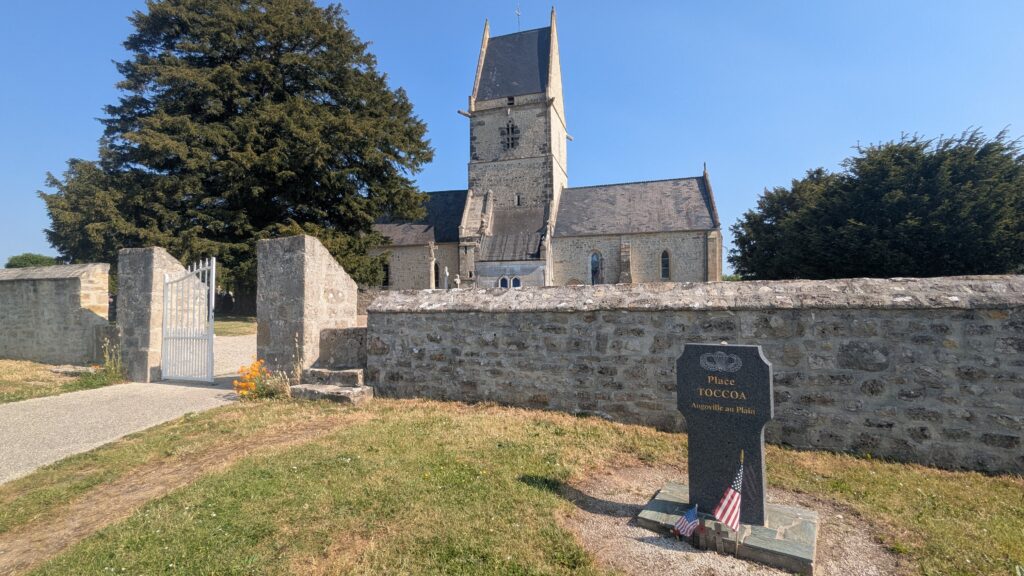
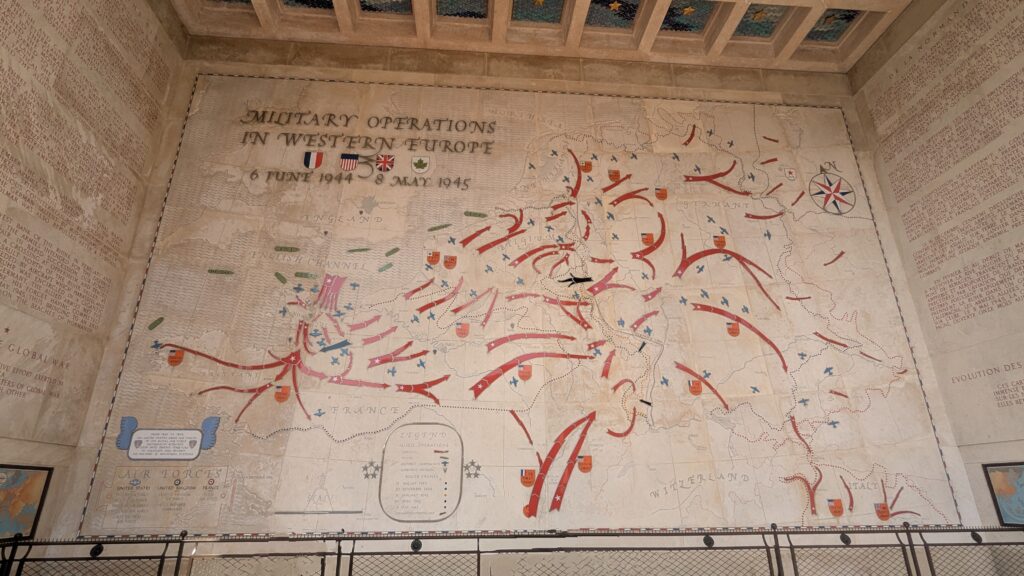
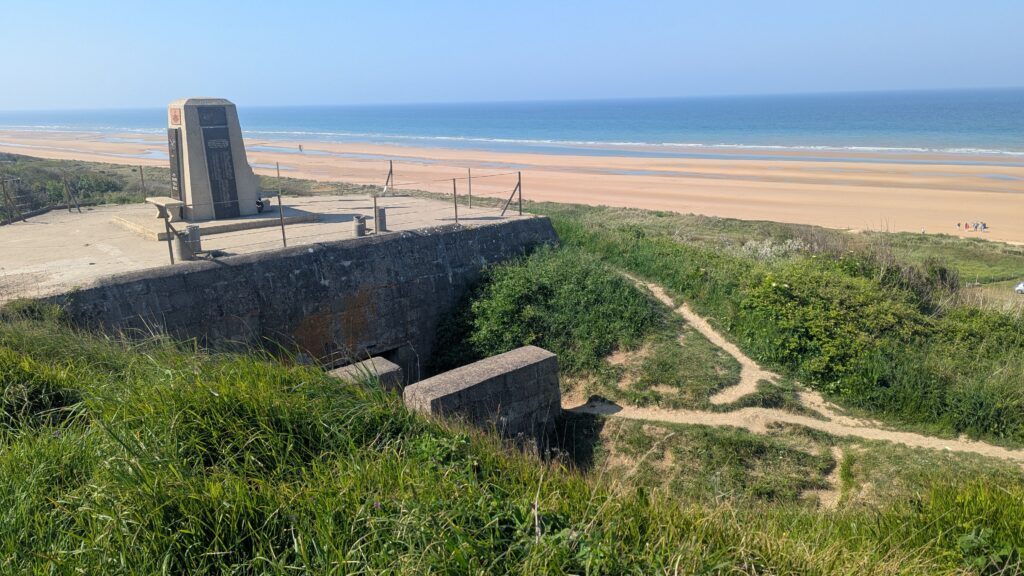
Day 3
- Ardenne Abbey – The site where 20 Canadian POWs were executed by SS troops. There is a Canadian memorial here.

Pegasus Bridge - Pegasus Bridge – Originally called Bénouville Bridge, it is known as Pegasus Bridge for the symbol of D Company, 2nd (Airborne) Battalion, Oxfordshire and Buckinghamshire Light Infantry. They were some of the very first troops to come into Normandy, just after midnight. Their team also recorded the first casualty of the battle. They are a glider company.
- We visited Sword Beach (British), Juno Beach (Canadian), and Gold Beach (British) – Canadian casualties on Juno were second only to Omaha Beach, with the Queen’s Own Rifles of Canada QORC) losing 50% of it’s troops before clearing the beach, but they accomplished their mission, capturing Anguerny seven miles inland. There were many First Nation troops with the Canadians. There is a monument to them on Juno.
- Hillman Fortress – The heavily fortified hill 61, code named Hillman by the British. Taking the hill was assigned to the Suffolk Regiment, the soldiers landing at Sword, as their assignment for D-Day. Surrounded by a mine field, they did succeed in taking it but the Germans didn’t surrender until 7 June. The delay in taking the bunker complex has been cited as a reason for the Allies not completing their major D-Day objective of taking Caen.
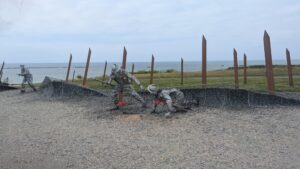
Mulberry Harbor - The Mulberry Harbor at Arromanches – I had never heard about these temporary harbors. The Allies needed ways to send reinforcements and supplies to the landing armies, so Eisenhower decided artificial ports were needed until the existing French ports could be secured. They created outer floating breakwaters, inner fixed breakwaters and floating piers and jetties. Two were created, at Omaha and Arromanches, but a large storm damaged the one at Omaha. Planned to be used for only 90 days, the harbor remained in use until October.
- The Longues sur Mer Battery – The guns had 12-mile range and were able to fire on Omaha, Gold and Juno. Because they were far from the cliff face, they were a difficult target for the navy ships. There is a control bunker on the cliff edge, dug into the earth, with communication to the four bunkers 350m away. There was barbed wire and mines protecting the area, too. The original guns are still in place.
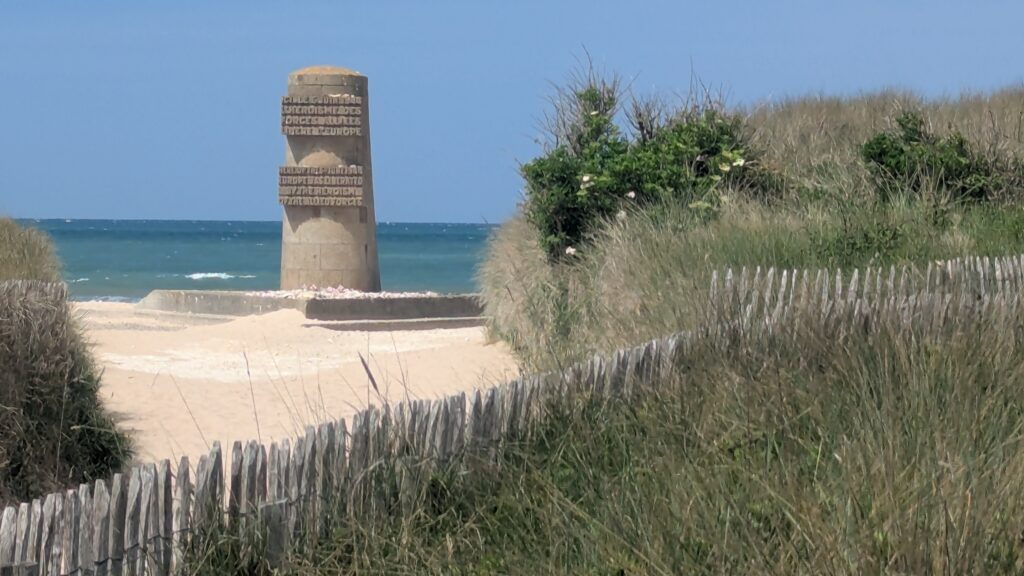
Museums
My last full day in Normandy I had to decide which of the 20-30+ WWII museums in the area I would visit. Seriously, it’s a difficult choice, because so many sound great and I needed more time. Wish I had stayed another 3 days or so.
- I had visited Pegasus Bridge earlier in the week and Malcolm did recommend returning to see the museum here. The Pegasus Bridge Memorial Museum is not just about the British 6th Airborne and their capture of the bridges. There is information on the gliders, different types, and how much they were used in the war. They transported not just troops but heavy equipment, too. I didn’t know how much gliders were used. Despite the danger of landing – and breaking apart – it kept troops together and they were better prepared for their operations. I also got to hear about the development of the Bailey Bridges and see examples.
- Normandy Victory Museum is highly rated. It is the opposite direction from Pegasus in Caen, it’s close to Utah and Carentan, but that was why I had the car, to explore. It has a very good layout and information. There are 15,000 artifacts and 27 scenes in the museum. There is an exhibit on Women at War, Veteran’s Stories, several videos throughout, and good information on the Battle of the Hedgerows. I heard a lot about the hedgerows or “bocage” from Malcolm throughout the week. These tall, dense, hedges are used to mark property lines and keep in livestock. They are difficult, driving by they look almost impossible, to get through. It is also very difficult to know what is on the other side. I looked up some additional information on the bocage, very interesting history. Some of the exhibits include a real enigma machine found in local attic by grandchildren cleaning out the house and a lynx panzer tank; believed to be one of two remaining in working condition.
- Musee Memorial Bataille De Normandie I visited this my first day in Bayeux. Laid out chronologically from 6 June through the end of August, and has the film “Normandy 44, Decisive Victory in the West”. It had information on the Falaise-Chambois battle, which I hadn’t heard of until the museum. The allies surrounded the 7th Army and 5th Panzer Army, mid-August 1944. This battle is considered the end of the Battle of Normandy, with the destruction of the Germany armies.
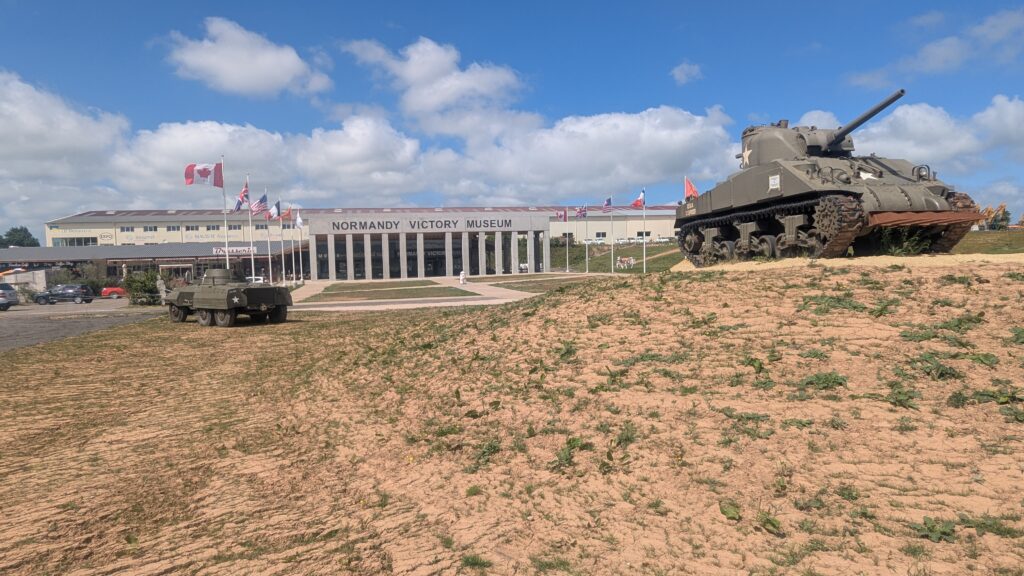
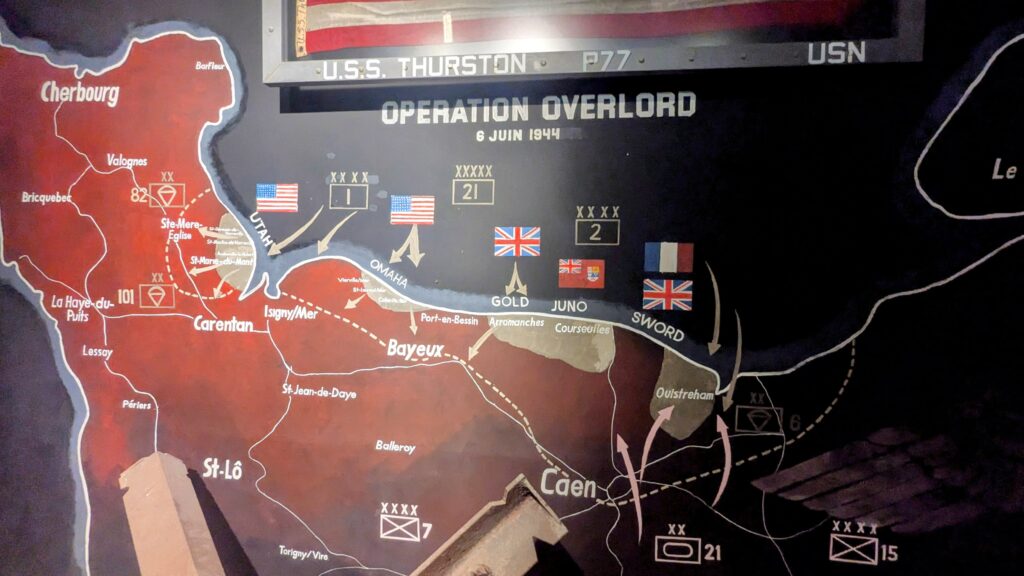
“The battlefield at Falaise was unquestionably one of the greatest ‘killing fields’ of any of the war areas. Forty-eight hours after the closing of the gap I was conducted through it on foot, to encounter scenes that could be described only by Dante. It was literally possible to walk for hundreds of yards at a time, stepping on nothing but dead and decaying flesh.”
— General Eisenhower
I would have liked time to visit the Airborne Museum in Sainte-Mere-Eglise, the Caen Memorial Museum, the British Military Cemetery in Bayeux, and be able to return to Arromanches and see the Musee du Debarquement.
If I had a lot more time, I’d also like to see the D-Day Experience in Carentan, Overlord Museum Omaha Beach, and the Musee des Epaves Sous-Marines. This sounds especially interesting, exhibiting the artifacts brought up from the ocean by divers from the landings.
Like McArthur to the Philippines, “I shall return”? I hope.
** All photos property of Lisa, not to be copied or reproduced **
